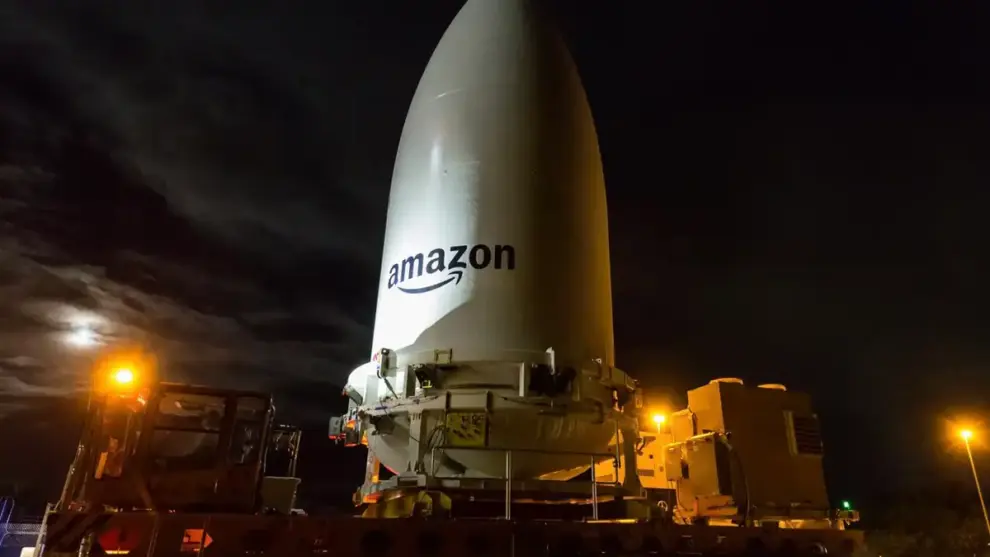Are you tired of buffering videos and sluggish downloads? Imagine a world where high-speed internet reaches every corner of the globe, even the most remote and underserved areas. This dream is inching closer to reality as Amazon gears up to launch its first full batch of Project Kuiper satellites. Could this be the dawn of a new era for global connectivity?
After years of planning and development, the tech giant is on the cusp of deploying a significant number of its low Earth orbit (LEO) satellites. This ambitious project aims to create a constellation of thousands of satellites that will beam down affordable, high-speed internet to individuals, businesses, and government agencies worldwide. This move positions Amazon as a major competitor in the burgeoning satellite internet market, currently dominated by SpaceX’s Starlink.
Recent filings with regulatory bodies and statements from Amazon officials indicate that the first substantial launch is imminent. While the exact date remains under wraps, sources suggest it could happen within the coming months. This initial batch will be a crucial step in validating the technology and building out the initial phase of the constellation.
What makes Project Kuiper so significant? Unlike traditional geostationary satellites that orbit much higher above the Earth, LEO satellites are closer, resulting in significantly lower latency – the delay in data transfer. This means faster loading times, smoother video calls, and a more responsive online experience, crucial for activities like online gaming, remote work, and telemedicine.
Amazon has invested heavily in the infrastructure required for Project Kuiper. This includes not only the design and manufacturing of the satellites but also the development of user terminals – the antennas that customers will use to connect to the network – and the ground stations that will manage the satellite constellation. The company has secured multiple launch agreements with companies like Arianespace and its own Blue Origin to deploy the thousands of satellites needed for full global coverage.
The potential impact of Project Kuiper is enormous. Millions of people around the world currently lack access to reliable internet, hindering their access to education, healthcare, and economic opportunities. Project Kuiper promises to bridge this digital divide, connecting rural communities, remote regions, and areas where traditional internet infrastructure is difficult or expensive to deploy.
Consider the possibilities for a student in a remote village who can now access online learning resources, a doctor who can conduct virtual consultations with patients in underserved areas, or a small business owner who can reach new customers through e-commerce. These are just a few examples of how Project Kuiper could transform lives and economies.
Amazon has emphasized its commitment to responsible space operations. The company has outlined plans to mitigate space debris, a growing concern in the satellite industry. This includes designing satellites with a limited lifespan that will eventually deorbit and burn up in the atmosphere, as well as developing technologies for tracking and avoiding collisions.
The competition in the satellite internet market is heating up. SpaceX’s Starlink already has a significant number of satellites in orbit and is providing service to customers in various regions. However, Amazon’s entry into the market brings its vast resources, technological expertise, and established customer base to bear. This competition could ultimately drive down prices and improve the quality of service for consumers.
Industry analysts believe that the demand for satellite internet will continue to grow, driven by the need for connectivity in remote areas and the increasing reliance on bandwidth-intensive applications. Amazon’s Project Kuiper is poised to capture a significant share of this market, potentially transforming the way we access the internet globally.
The upcoming launch of the first full batch of Project Kuiper satellites is more than just a technological milestone. It represents a significant step towards a more connected world, where access to information and online services is no longer limited by geography. As Amazon’s ambitious project takes flight, the world watches with anticipation, eager to see the transformative impact it will have on our lives. Could this be the answer to ending the frustration of slow internet for good? Only time will tell, but the journey has just begun, and the potential is immense.








